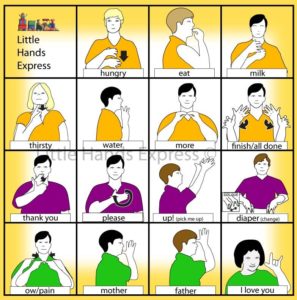The American Academy of Pediatrics Website
Routines:
Creating Routines for Love and Learning
The Power of Using Everyday Routines to Promote Young Children’s Language and Social Skills
Infant/Toddler Caregiving: A Guide to Routines
Relationship-Based Practices:
Early Caregiver Relationships Build the Foundation for Lifelong Learning
How to Care for Infants and Toddlers in Groups
Continuity of Care with Infants and Toddlers
Eating:
AAP Book – Nutrition: What Every Parent Needs to Know
When Can a Baby Sit Up in a High Chair?
How To Manage Messy Eating and Food Throwing
Diapering/Toilet Training:
Toilet Training Girls vs. Boys 1
Toilet Training Girls vs. Boys 2
Developmental Milestone: Nighttime Dryness
Bathing and Dressing:
How to Get Kids to Wash Their Hands
How to Dress and Undress a Baby
Sleeping:
8 Facts to Know About Infant Sleep
Essential Elements of a Baby Bedtime Routine
Teaching Your Baby to Put Himself to Sleep
8 Tips to Get Your Children to Bed with Brain Science
When Should a Baby Sleep Through the Night?
The Happiest Baby on the Block Method
Sudden Infant Death Syndrome (SIDS):
Communication and Baby Sign Language:
Baby Talk: Communicating with Your Baby
How Can I Practice Baby Sign Language?
The following chart shows the most common signs to teach infants and toddlers:
Additional Readings
American Academy of Pediatrics. Healthy from the start: How feeding nurtures your young child’s body, heart and mind. Retrieved from https://www.zerotothree.org/resources/352-healthy-from-the-start
Gonzalez-Mena, J. (2007). What do to for a fussy baby: A problem solving approach. Beyond the journal, (September 2007), 1-6.
Im, J., Parlakian, R., & Sanchez, S. (2007). Understanding the influence of culture on caregiving practices: From the inside out. Young Children, (September 2007), 65-66.
Lally, J.R. (2012). Infants have their own curriculum: A responsive approach to curriculum planning for infants and toddlers. Retrieved from http://www.communityplaythings.com/resources/articles/infanttoddler/aresponsive.html.
Lally, J., & Mangione, P. (2006). The uniqueness of infancy demands a responsive approach to care. Young Children, July, 1-6.
